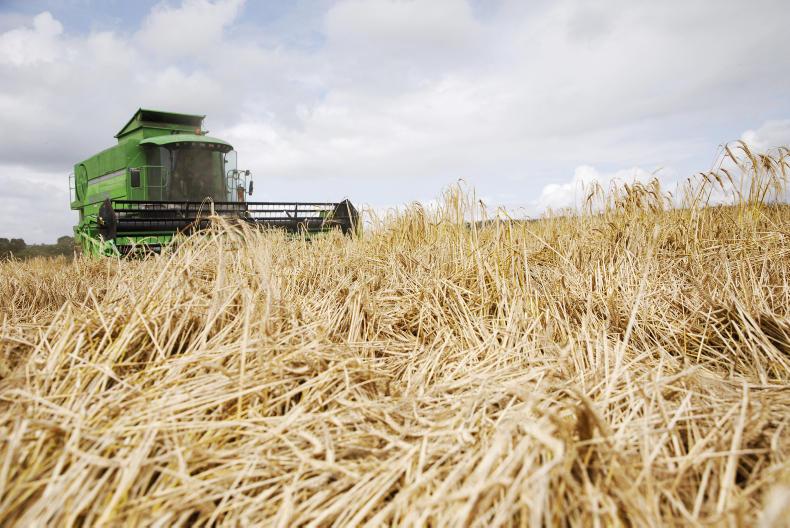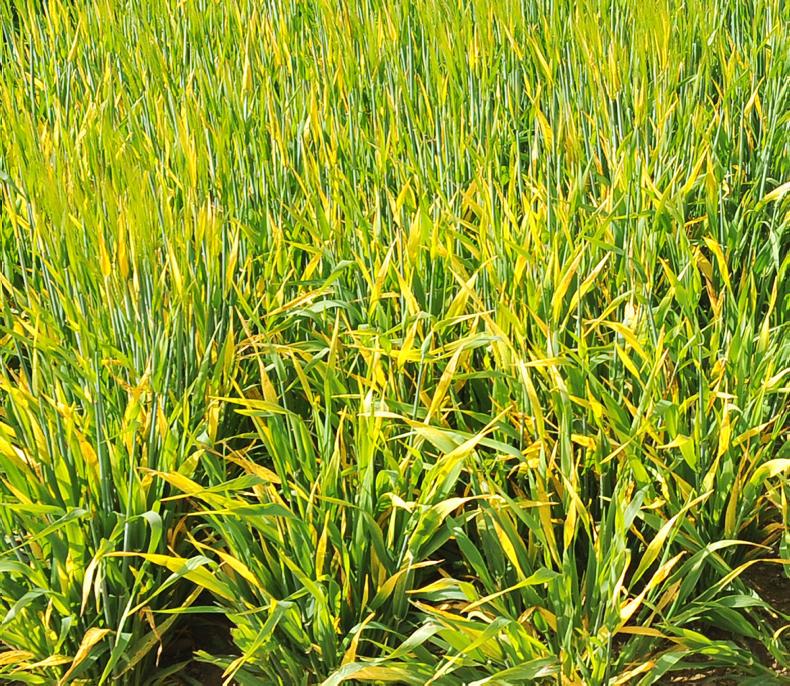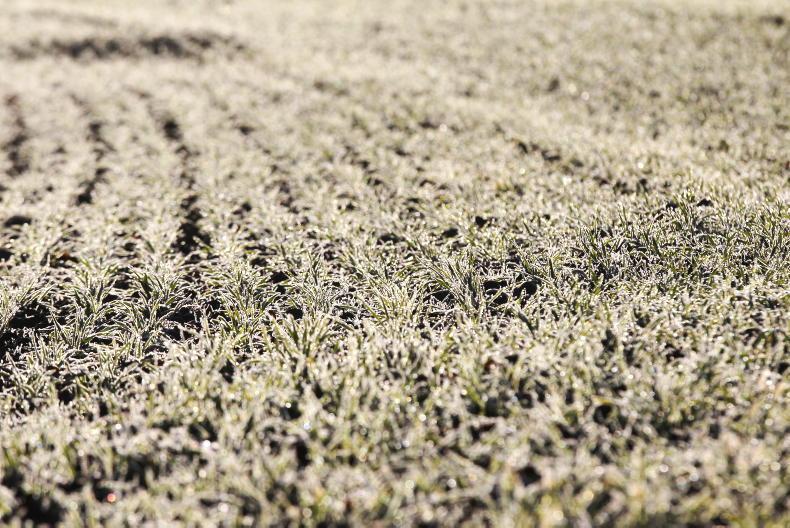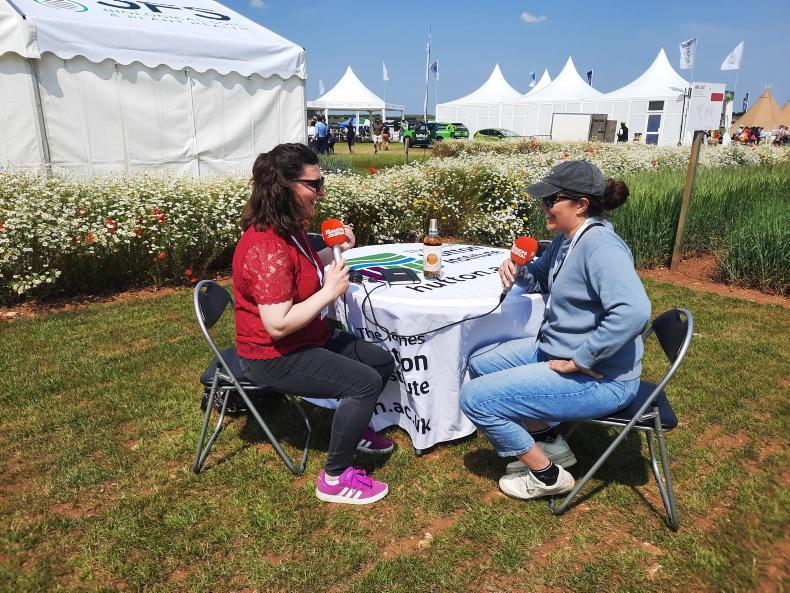How will those in tillage remember 2019? A Jekyll and Hyde year; ecstasy and agony; a year of two halves; and so it goes.
It was a year where your farming system had a big bearing on your memory. Winter cereal producers got crops in early and in good condition in the previous autumn, a stark contrast to the situation this back end.
Planting in spring proved more difficult, with March and April being very wet months in many parts of the country.
But the growing season picked up to produce high yields in the vast majority of crops, perhaps a part legacy of the somewhat poorer performance in the dry year of 2018.
Those storing their own grain will be very conscious of the great difficulty in moving grain due to the huge levels of maize imports. There was some relief in June when difficulties arose over the performance of some imported maize and compounders reverted to native grains.
This provided significant relief, but there was still a substantial amount of carryover stock (native and imported) and this affected storage capacity at harvest.
Yields
For many growers, yield will be one of the aspects worth remembering from 2019. With the exception of winter barley, most other crops produced very high yields.
This may have been partly helped by the cool spring, the relatively dry winter with possible nitrogen carryover or just a good first half to the growing season. Whatever the reason(s), the high yields were a welcome response to the weaker market.
Grain quality was good also, but not exceptional given the yield levels achieved. It would seem that the high yield potential was generated by high grain numbers more so than high grain fill.

Broken weather slowed the completion of the harvest and many crops were beaten into the ground by the time combines arrived. But quality remained solid. \Donal O' Leary
Teagasc puts the national average winter wheat yield at 10.1t/ha, with winter barley at 9.42t and spring barley at 8t/ha.
Total area was similar to the previous year at 261,000ha, but overall production was up to 2.225 million tonnes from 1.853 million tonnes in 2018.
But the makings of a great harvest was thwarted by the fall in output values with green feed prices down over 25% and straw prices more than halved.
BYDV
The growing season was not incident-free. One of the big talking points and fears for 2019 was barley yellow dwarf virus (BYDV).
There was an amount of yellowing evident in winter crops and the later-planted spring crops quickly showed significant levels of yellowing. While the yellowing was unquestionable, the symptoms were not totally characteristic of the virus and so relevant questions continue to be valid.
While most visible yellowing occurred in spring barley, harvest performance suggested that this had not been a serious issue for yield. Crops yielded well despite the symptoms.
But some winter barley growers believe that this disease had huge impact on the yield of individual crops, despite visibly lower levels of yellowing. Many relevant questions remain with regard to these symptoms.
The other big issue around BYDV hinged on the loss of Redigo Deter as a seed dressing for BYDV control. This followed the banning of all the neonicotinoid insecticides for use on field crops.
This resulted in the advice to delay planting dates, but this had the consequences of pushing the majority of planting into broken weather and difficult planting conditions.
With the way the autumn developed, it seems that this disease is unlikely to be a major risk.
Loss of chlorothalonil
While it is only due to happen next May, the decision not to register chlorothalonil (Bravo) will pose many challenges for disease control in this country.
While it has long been an important active for disease control in wheat, it has become increasingly important in barley, where it is now critical for the successful control or ramularia.
Luckily, there will be a few new molecules coming through for 2020, but we remain concerned about how best to protect these in the absence of chlorothalonil.
Malting collapse
Just as the harvest was starting at the end of July, the main malting facility at Boortmalt’s Athy plant collapsed.
Thankfully, there was no one injured, but the accident made for huge uncertainty for the harvest ahead. And this happened as works began on a new plant to increase overall malting capacity there.
The accident meant that malting capacity was reduced to about 30%, with the hope that the new facility would be up and running by January to bring the overall facility up to 70% capacity.
Every decision was clouded in suspicion and blame
Uncertainty abounded as to what the loss of malting capacity would mean for barley purchase. Every decision was clouded in suspicion and blame and the flow of a very high proportion of low-protein barley fuelled the rumour mill.
But the barley was purchased and later-harvested crops turned in higher protein levels suitable for brewing.
The hope now is that the rebuilding of the collapsed facility may be completed by April to bring malting capacity up to 140% of last year.
Good prices
Prices were generally good for malting barley in 2019, with a new pricing formula in place and some very good forward offers availed of by growers. The significant drop in feed barley prices helped the premium.
However, the low plantings of winter cereals across a proportion of northern Europe is now giving fears of considerable barley surplus for 2020, with a further price hit for the feed crop.
The bad backend
For many growing winter cereals, the bad backend was the worst they had ever seen. High levels of rainfall restored the balance of the dry first six months and quickly made field work difficult.
Occasional weather windows enabled work to be done in dribs and drabs and always in less than favourable conditions. And many using non-inversion systems got little or no planting done.
But many who depended on plough-based systems also had great difficulties and some got no planting at all done. Planting progress ranged from 0% in some areas to 100% in others.
Temperatures dropped much earlier than recent years and crops were very slow to emerge. But they did emerge and generally better than expected.
But with little more than 50% of last year’s area planted before winter, there is now real concern for seed availability for the coming spring.
The broken weather also had a big impact on late-season harvesting of potatoes, maize and fodder beet. Most crops were eventually harvested, but their legacy will inevitably be damaged soil, which may have a knock-on effect for a number of years.
The major event from 2019 depended on the farming system. But, on average, it will go down as a high-yield year, with modest prices relative to recent years.
Harvest was difficult at the end of the season and heavier soils posed a considerable obstacle to both harvesting and planting.
Malting became a serious issue around harvest time and untypically low protein levels led to widespread rejection and considerable controversy.
Winter planting is at an all-time low because of the wet weather and now seed availability for spring planting has become a concern.
How will those in tillage remember 2019? A Jekyll and Hyde year; ecstasy and agony; a year of two halves; and so it goes.
It was a year where your farming system had a big bearing on your memory. Winter cereal producers got crops in early and in good condition in the previous autumn, a stark contrast to the situation this back end.
Planting in spring proved more difficult, with March and April being very wet months in many parts of the country.
But the growing season picked up to produce high yields in the vast majority of crops, perhaps a part legacy of the somewhat poorer performance in the dry year of 2018.
Those storing their own grain will be very conscious of the great difficulty in moving grain due to the huge levels of maize imports. There was some relief in June when difficulties arose over the performance of some imported maize and compounders reverted to native grains.
This provided significant relief, but there was still a substantial amount of carryover stock (native and imported) and this affected storage capacity at harvest.
Yields
For many growers, yield will be one of the aspects worth remembering from 2019. With the exception of winter barley, most other crops produced very high yields.
This may have been partly helped by the cool spring, the relatively dry winter with possible nitrogen carryover or just a good first half to the growing season. Whatever the reason(s), the high yields were a welcome response to the weaker market.
Grain quality was good also, but not exceptional given the yield levels achieved. It would seem that the high yield potential was generated by high grain numbers more so than high grain fill.

Broken weather slowed the completion of the harvest and many crops were beaten into the ground by the time combines arrived. But quality remained solid. \Donal O' Leary
Teagasc puts the national average winter wheat yield at 10.1t/ha, with winter barley at 9.42t and spring barley at 8t/ha.
Total area was similar to the previous year at 261,000ha, but overall production was up to 2.225 million tonnes from 1.853 million tonnes in 2018.
But the makings of a great harvest was thwarted by the fall in output values with green feed prices down over 25% and straw prices more than halved.
BYDV
The growing season was not incident-free. One of the big talking points and fears for 2019 was barley yellow dwarf virus (BYDV).
There was an amount of yellowing evident in winter crops and the later-planted spring crops quickly showed significant levels of yellowing. While the yellowing was unquestionable, the symptoms were not totally characteristic of the virus and so relevant questions continue to be valid.
While most visible yellowing occurred in spring barley, harvest performance suggested that this had not been a serious issue for yield. Crops yielded well despite the symptoms.
But some winter barley growers believe that this disease had huge impact on the yield of individual crops, despite visibly lower levels of yellowing. Many relevant questions remain with regard to these symptoms.
The other big issue around BYDV hinged on the loss of Redigo Deter as a seed dressing for BYDV control. This followed the banning of all the neonicotinoid insecticides for use on field crops.
This resulted in the advice to delay planting dates, but this had the consequences of pushing the majority of planting into broken weather and difficult planting conditions.
With the way the autumn developed, it seems that this disease is unlikely to be a major risk.
Loss of chlorothalonil
While it is only due to happen next May, the decision not to register chlorothalonil (Bravo) will pose many challenges for disease control in this country.
While it has long been an important active for disease control in wheat, it has become increasingly important in barley, where it is now critical for the successful control or ramularia.
Luckily, there will be a few new molecules coming through for 2020, but we remain concerned about how best to protect these in the absence of chlorothalonil.
Malting collapse
Just as the harvest was starting at the end of July, the main malting facility at Boortmalt’s Athy plant collapsed.
Thankfully, there was no one injured, but the accident made for huge uncertainty for the harvest ahead. And this happened as works began on a new plant to increase overall malting capacity there.
The accident meant that malting capacity was reduced to about 30%, with the hope that the new facility would be up and running by January to bring the overall facility up to 70% capacity.
Every decision was clouded in suspicion and blame
Uncertainty abounded as to what the loss of malting capacity would mean for barley purchase. Every decision was clouded in suspicion and blame and the flow of a very high proportion of low-protein barley fuelled the rumour mill.
But the barley was purchased and later-harvested crops turned in higher protein levels suitable for brewing.
The hope now is that the rebuilding of the collapsed facility may be completed by April to bring malting capacity up to 140% of last year.
Good prices
Prices were generally good for malting barley in 2019, with a new pricing formula in place and some very good forward offers availed of by growers. The significant drop in feed barley prices helped the premium.
However, the low plantings of winter cereals across a proportion of northern Europe is now giving fears of considerable barley surplus for 2020, with a further price hit for the feed crop.
The bad backend
For many growing winter cereals, the bad backend was the worst they had ever seen. High levels of rainfall restored the balance of the dry first six months and quickly made field work difficult.
Occasional weather windows enabled work to be done in dribs and drabs and always in less than favourable conditions. And many using non-inversion systems got little or no planting done.
But many who depended on plough-based systems also had great difficulties and some got no planting at all done. Planting progress ranged from 0% in some areas to 100% in others.
Temperatures dropped much earlier than recent years and crops were very slow to emerge. But they did emerge and generally better than expected.
But with little more than 50% of last year’s area planted before winter, there is now real concern for seed availability for the coming spring.
The broken weather also had a big impact on late-season harvesting of potatoes, maize and fodder beet. Most crops were eventually harvested, but their legacy will inevitably be damaged soil, which may have a knock-on effect for a number of years.
The major event from 2019 depended on the farming system. But, on average, it will go down as a high-yield year, with modest prices relative to recent years.
Harvest was difficult at the end of the season and heavier soils posed a considerable obstacle to both harvesting and planting.
Malting became a serious issue around harvest time and untypically low protein levels led to widespread rejection and considerable controversy.
Winter planting is at an all-time low because of the wet weather and now seed availability for spring planting has become a concern.











SHARING OPTIONS